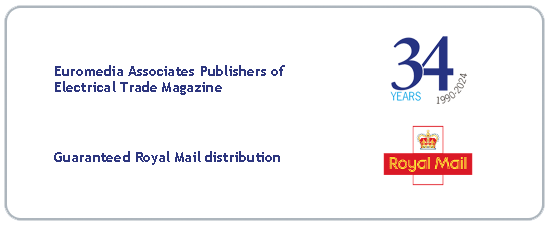George Brickwood, UK&I eCommerce Director at Schneider Electric
Year on year, people are purchasing and selling more products and services online; between 2020 and 2025, the eCommerce market is expected to expand from 32.5% to 38.1% of total retail sales. While consumer sales account for a significant portion of the market, business-to-business (B2B) eCommerce is expanding. Fast.
As digital technology gains a stronger hold on our lives, the global consumer marketplace influences enterprises, demonstrating the potential of eCommerce. Distributors must adapt to changing business needs and become more technologically aware in order to remain relevant in a competitive market.
 In this series, I’ll look at the aspects that contribute to a successful eCommerce strategy, with an emphasis on its applications in the electrical distribution industry. Each article will present one of three essential success criteria: technology, people, and processes.
In this series, I’ll look at the aspects that contribute to a successful eCommerce strategy, with an emphasis on its applications in the electrical distribution industry. Each article will present one of three essential success criteria: technology, people, and processes.
Electrical eCommerce: where are we now?
The electrical distribution industry is a very traditional one and has been slower to adopt eCommerce compared to other industries. The key challenge is overcoming the level of investment required to develop an online presence and compete effectively. Another issue with the shift online is culture – for small traders in particular, word of mouth, personal contact and long-term relationships have been fundamental to success for generations. Shifting operations online can seem daunting and risky. However, threatened by an explosion in online competitors and in the wake of the COVID-19 pandemic, eCommerce is now critical to sustainable growth in electrical distribution.
The current generation of B2B buyers are looking for ease and speed. To stay competitive, distributors must acknowledge the changing expectations of buyers and move away from the traditional, manual processes that hold the industry back. Ecommerce introduces increased flexibility and buying opportunity, which distributors must take advantage of. Put simply, to grow the customer base and keep existing customers loyal, distributors must find ways to add value to the buying experience.
Transitional tech for eCommerce success
To make the transition to online services, electrical distributors must make digital decisions that enable a streamlined online buying experience that attracts new buyers, and services existing customers. COVID-19 has further highlighted the need for eCommerce strategies to be robust, scalable and futureproof.
 Any eCommerce model must start with a platform that matches business needs. Mobile capability is critical as it is fast becoming the preferred purchase method for many B2B buyers. From a technical perspective, a mobile-first approach can provide greater flexibility as it is easier to scale and will render more easily across devices.
Any eCommerce model must start with a platform that matches business needs. Mobile capability is critical as it is fast becoming the preferred purchase method for many B2B buyers. From a technical perspective, a mobile-first approach can provide greater flexibility as it is easier to scale and will render more easily across devices.
With any online service dealing with customer data, security must be second to none; the repercussions from flaws or failures can be damaging both financially and reputationally. The strongest platforms provide an end-to-end secure connection across all data and transactions. What’s more, sales conversion is heavily influenced by a customer’s perception of website safety and data privacy. Remember, customer trust is as essential to the switch to an online distribution strategy as compliance and safeguarding.
2020 demonstrated the importance of flexibility and resilience. Cloud hosting has since pivoted from being useful to being indispensable. Cloud hosting helps to manage changing market demands by upscaling or downscaling services in line with traffic changes or seasonal peaks. Cloud services can also reduce costs as there is no upfront investment in infrastructure and prices fluctuate according to requirement and capacity. What’s more, cloud-based architecture can improve accessibility and reduce the chance of data loss or security threats.
Integration in eCommerce delivers a streamlined experience and optimises data intelligence. Third-party integration connects front-end and back-end tools and systems, so that components can seamlessly interact with each other. By connecting separate platforms, insight can be derived from  customer behaviour and actions, such as buying patterns and the results of marketing activity. When developing an eCommerce strategy, third-party integrations can offer new tools to expand customer experience and platform capabilities, to deliver a personalised journey.
customer behaviour and actions, such as buying patterns and the results of marketing activity. When developing an eCommerce strategy, third-party integrations can offer new tools to expand customer experience and platform capabilities, to deliver a personalised journey.
Finally, successful eCommerce in the electrical distribution industry requires analytic technology. Analytics help to understand what a customer wants from a buying experience by tracking their journey across the platform. For the electrical distributors, optimisation of customer experience is crucial for improving the shift from offline to online sales. With so many market competitors, the personalisation that analytics enables can elevate the experience to maintain customers and convert opportunities into sales.
Choosing the right technology is critical for establishing a successful eCommerce strategy. The eCommerce needs in the electrical distribution industry, on the other hand, are diverse. It takes the proper people to create digital sales channels and give customer support and assistance, as well as the right processes to efficiently manage and scale changes. In the next part of the series, I’ll go through the people you’ll need to make your eCommerce adoption journey a success.





